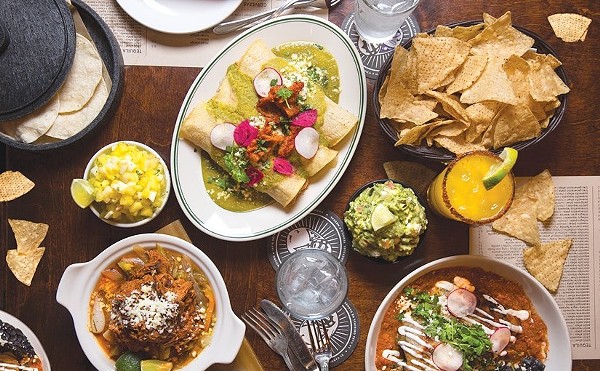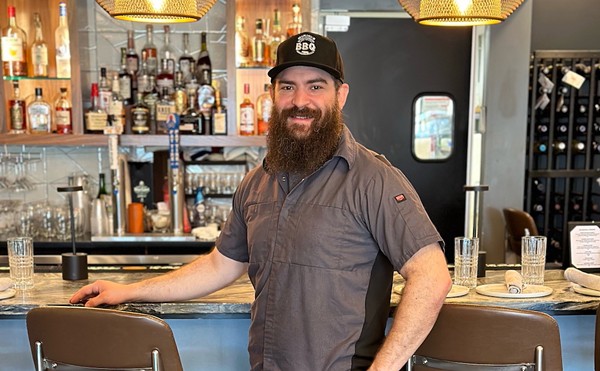The customer ordering a glass of wine at the Black Pig wasn't quite sure she heard the bartender correctly.
"Wait. Does that wine go through a tube?" she asked.
"Yes, technically it does," he responded.
"Never mind," she said. "I don't drink anything that goes through a tube."
In recounting that story, chef-owner Mike Nowak illustrates just how foreign the concept of wine on tap still is to the general consumer. (Not to mention how odd some people truly are.)
Until recently, wine on tap has been a rare novelty, popping up at one or two local restaurants within the past five years. But that no longer is the case. In addition to Black Pig, restaurants now offering it include Press Wine Bar, Greenhouse Tavern, Flying Fig, and Lager & Vine. Before long, Tartine Bistro in Rocky River and Dan Deagan's new Lakewood spot Humble Wine Bar will join them. Operators are discovering that for the very first time, conditions such as quality, variety, cost and availability finally are coming together to ignite a trend.
At the newly opened Press Wine Bar in Tremont, owner John Owen offers eight wines on tap – the largest selection in the region. He also is in the process of adding four wine taps at Wine Bar Rocky River. He says that the trend finally is getting traction here thanks to a few main factors.
"The biggest thing for us was that the quality of available wine just started to get where it needed to be," he says. It wasn't that great wines weren't being kegged, he explains; it's that great kegged wine wasn't making its way to Ohio. "There was no infrastructure in place; there were no distributors to get the product to us." At long last, he says, local wine distributors have begun adding kegged wine to their portfolio of products.
Wine on tap has been an accepted practice for years in Europe and, more recently, in California, where it is appreciated for its eco-friendliness. Each reusable stainless keg replaces 26 glass bottles of wine, all of which require corks, foils, labels and boxes. Those heavy glass-and-wine filled boxes are then loaded onto pallets and shipped nationwide.
All of those savings—from less materials to reduced shipping costs—were to make their way to the operator and, ultimately, the consumer. But that hasn't been the case, says Owen – at least not yet. "The volume isn't there yet. But it will happen."
Nowak agrees. "We are finding out that kegged wine is not that much cheaper – maybe a dollar less per bottle – but we do save money on waste. We have zero waste."
Because kegged wine is constantly under gas, there is no chance of oxidation, unlike with an opened bottle of wine.
"It's fresh," says Nowak. "From the very first glass to the very last glass, it's exactly the same. Once you open a bottle, the wine begins to change. Even if you sell the entire bottle in two hours, the last glass will taste differently from the first glass."
Not only is an owner not losing money on spoiled—not to mention corked —wine, but they aren't paying to dispose of all those empty bottles. Commercial operators often have to pay for waste removal—and more for recycling pickup. Owen says that thanks to reusable kegs, 500 to 600 glass bottles per week are diverted from the trash bin.
Hand in hand with freshness is flavor. "It is shocking how fresh the product tastes compared to glass wine," says Owen. "You know how when you drink wine in California it just tastes better? I get that same feeling when I drink wine on tap."
Wine on tap also offers more flexibility. Operators can sell two-ounce flights, standard glasses, even carafes and pitchers. And as super-premium wines continue making their way into kegs, consumers can sample a glass without investing in an entire bottle.
"This allows us to offer high-end wines that people might never get to try – wines that we would never sell by the glass," says Owen. It also allows restaurants to offer slow sellers like Grüner by the glass
To help nudge dubious drinkers off the bottle and to the keg, Owen says he devised a list that blends both mainstream and boutique wineries. "Having well-known wineries on the list I think helps customers get over the thinking that kegged wine is like boxed wine," he says.
It appears to be working. "Our keg wines are now outselling our bottled wines 15-to-1," Owen reports.










